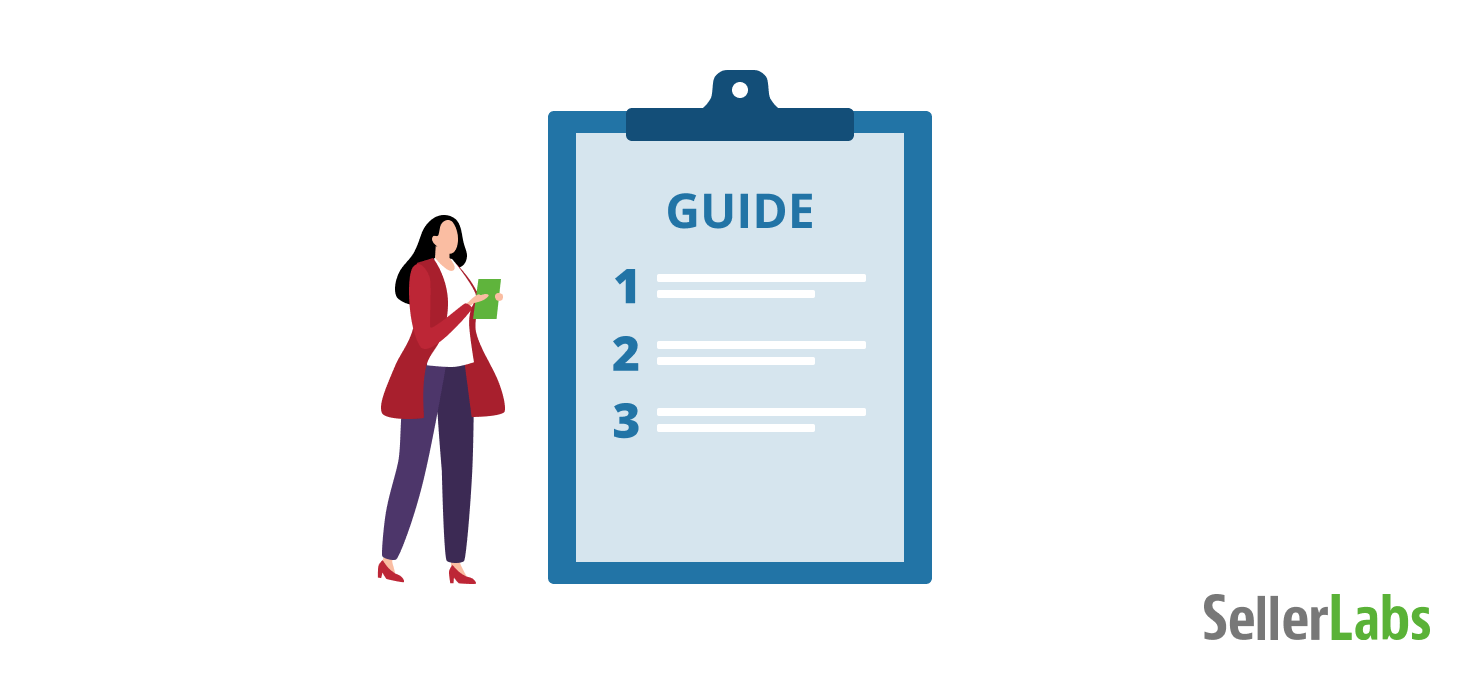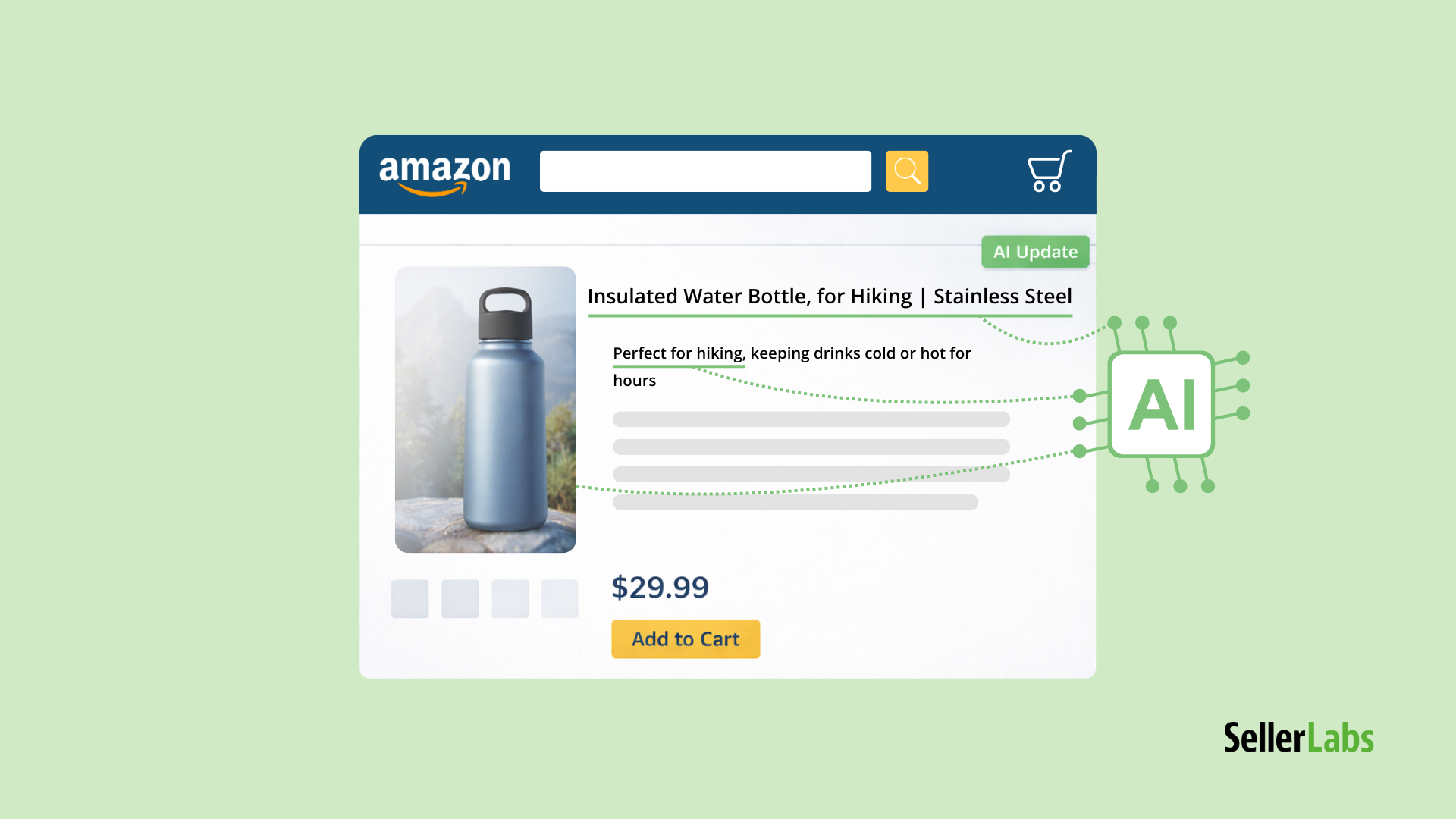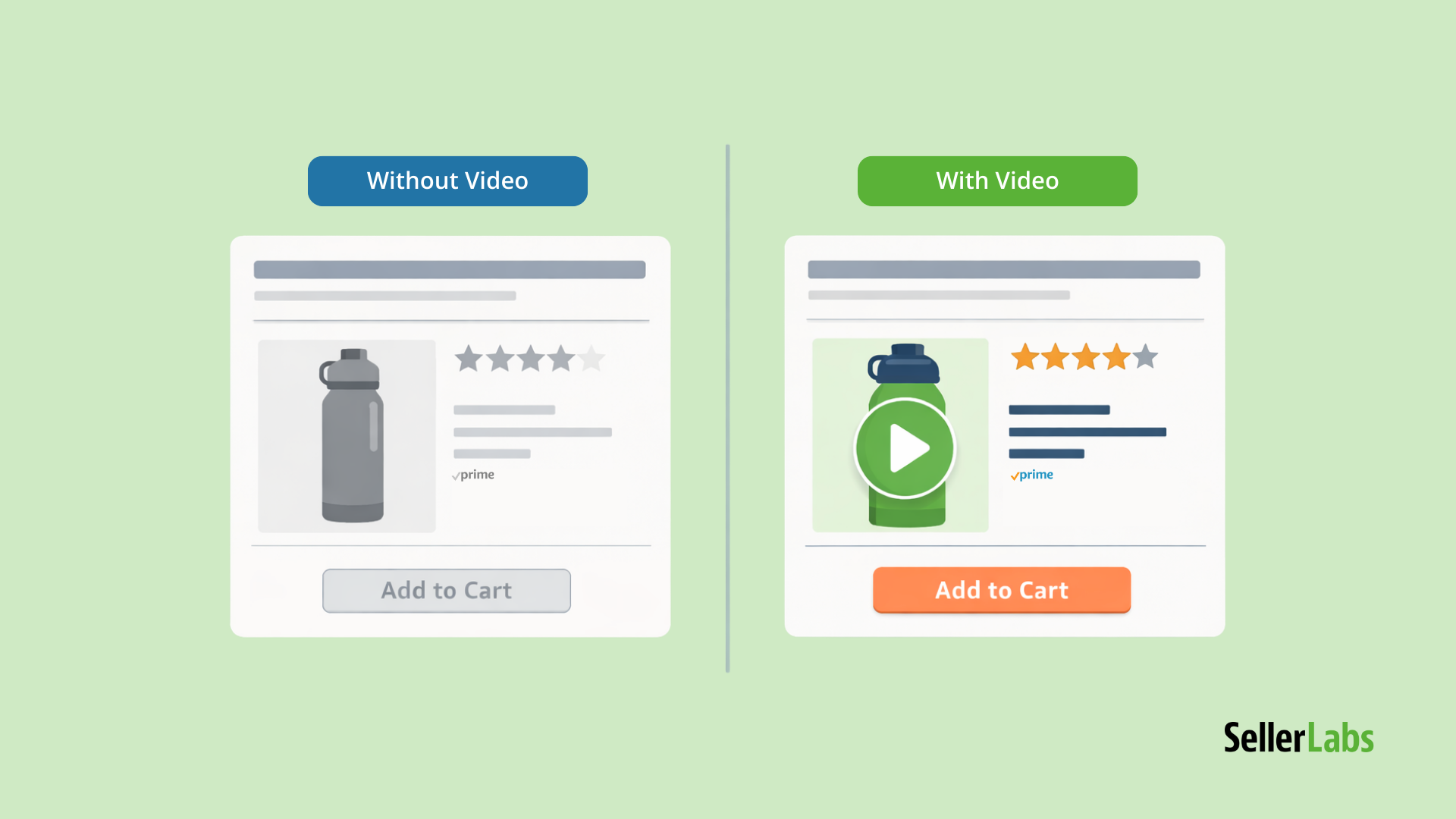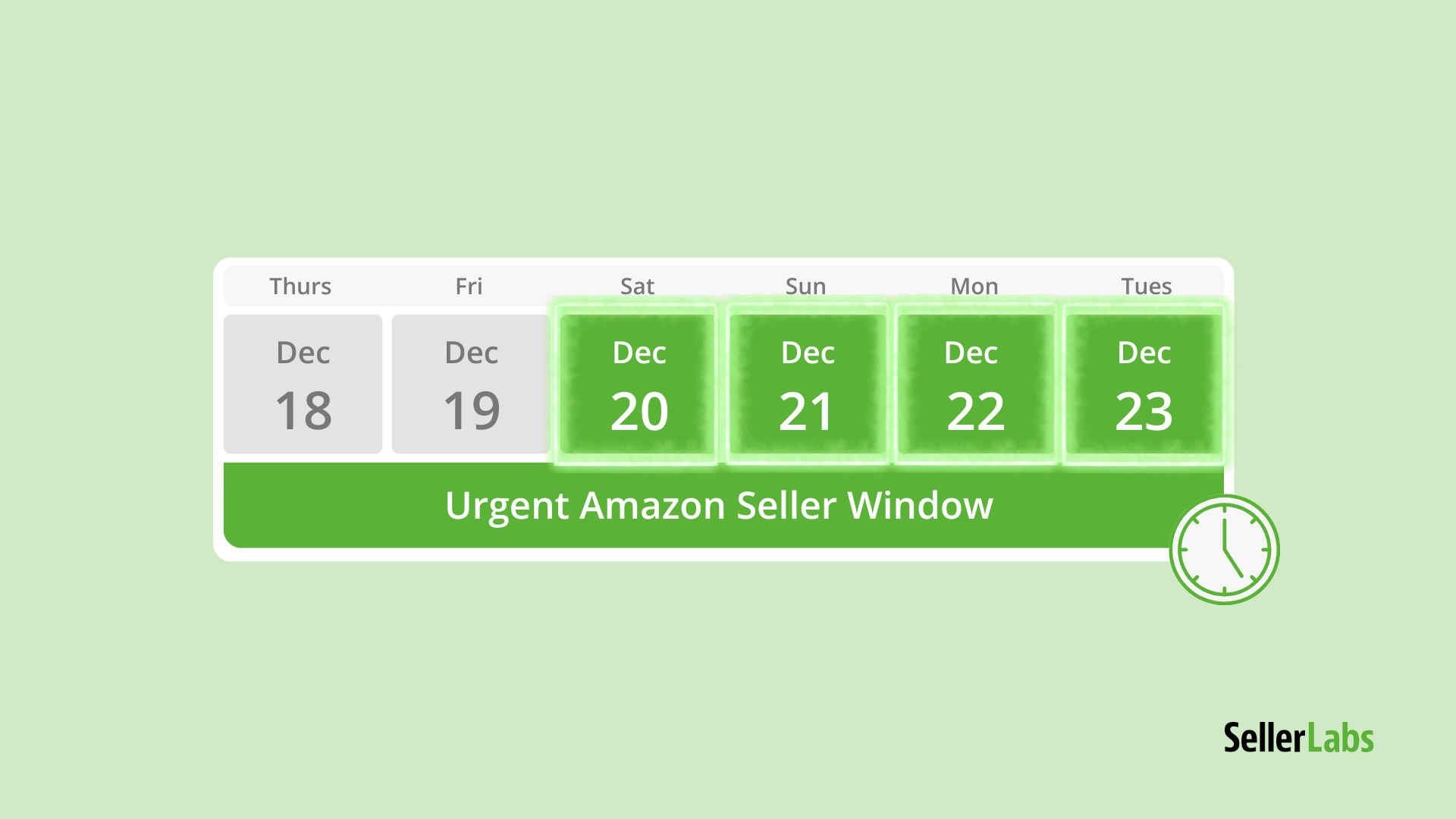If you don’t know exactly what you’re looking for or where to find it in Amazon Seller Central, it’s easy to get lost in the labyrinth. After hundreds of help articles and hours on the phone with customer support, you may find yourself still lacking the resources you came for.
Seller Central holds an astonishing, and at times, an overwhelming amount of information. To help you get to exactly what you need from Amazon Seller Central — quickly, directly, and without frustration — we’ve put together this guide.
Below, you’ll find links to the most useful pages, tools, and resources available in Amazon’s Seller Central – as well as some hidden gems.
Amazon Seller Central Basics
Amazon’s Seller Central is your central dashboard for seller services, business information, tax info, login credentials, and everything else that you need. Here are some crucial links that you’ll need to start selling on Amazon. Bookmark some, bookmark all, or just bookmark this page.
| What It Is | What It Does |
|---|---|
| Seller Account Information and Settings | Here, you’ll be able to edit details about your deposit and charge methods, business information, shipping and return settings, and tax information. |
| Notification Preferences | NoDepending on your selling plan, you’ll get various types of notifications from Amazon. Get the full list here. All merchants can customize these notifications and receive them by SMS or email. |
| User Permissions | Allow employees, co-owners, or contractors, to access your Seller Central Account by creating a new user. You’ll be able to invite anyone with an email address and edit their permissions. However, this feature is only available to sellers with a Professional Plan. |
| Vacation Settings | If you need to put your Amazon fulfillment on hold, Vacation Settings is an easy way to do it. Set all of your self-fulfilled listings to inactive and pause as needed — without losing history or having to manage individual listings. Find full details at Listing Status for Vacations, Holidays, and Other Absences. |
| Manage Orders | This page allows you to see all of your orders for a given date range. You can customize this view, or filter and search to see specific orders. |
| Account Health Dashboard | Use this dashboard to monitor your compliance with policies. In case of a violation, you will be notified of the changes needed to sell your product on Amazon. If you fail to correct the issue, your seller account may be deactivated. |
| Performance Notifications | Know exactly what’s flowing in from customers and how your account is performing with Performance Notifications. Keep up with this diligently so you can create smooth transactions and address any issues that could compromise your good standing as an Amazon seller. |
CHAPTER II What Can You Do With Your Seller Central Account?
Amazon offers crucial tools for account maintenance and business growth, but how will you know where to find them?
First, start with what you are trying to accomplish. Do you want to get a sales summary? Go to the Sales Dashboard. Update your product detail page? Look at the new Listing Quality Dashboard to find opportunities to optimize your product listings.
If you’d like to automate collecting data out of Seller Central, consider using Cajari which makes this easy to do for agencies at scale
We’ve collected the five actions we think you’ll use most often in Seller Central, and gathered all the most important links. Consider this your map to the maze of selling on Amazon.
Note: If you’re on an Individual Plan or if you sell with Kindle Direct Publishing (KDP), you won’t be able to access all these features.
1. Track Your Sales
The Sales Dashboard is hardly glamorous, but the Business Reports it provides are essential. You can access these reports in the menu bar on the left side of the page. Learn more about the Sales Dashboard with the Business Reports Glossary.
The quickest way to understand your progress is in the Sales Snapshot, which shows your daily stats. At a glance, view your orders, how many units were sold, and your revenue.
The snapshot is useful, but we recommend putting it into context with the comparison chart. You can use the comparison graph to compare today’s sales with another other time period so you can understand what variables affect your selling success.
2. View Your Payments
Amazon Seller Central will track the charges you accrue and the money you are owed, but you have to check the Payments Dashboard and the Disbursement Tracker frequently to see it.
If you’re interested in knowing how much money you’ve made on Amazon, (uh, who isn’t?) All Payment Statements is where your full history resides. While we’re on the subject of your Amazon business’ financial health, don’t forget about taxes.
Nobody likes taxes, but they go so much more smoothly when you handle them correctly. Keep the following pages bookmarked so you can handle sales tax and income tax come tax time.
- Tax Document Library
- U.S. Income Reporting & Tax Identity Collection FAQ: Info about 1099-K, W-9, W-8BEN, TIN, EIN, and the rest of those forms and numbers the government requires of sellers.
- Marketplace Tax Collection FAQ
- State Tax Settings
3. Manage Your Inventory
If you want to sell products on Amazon, you’ve got to maintain your inventory levels. Having enough stock is important for Fulfilled by Merchant (FBM) Sellers, but it’s critical if you rely on Amazon’s Fulfillment Centers.
Stock too little inventory, and you’ll be suppressed from Amazon search results. Stock too much, and you’ll accrue Long Term Storage Fees.
Find the sweet spot with your Inventory Dashboard. This collection of widgets gives you a quick summary of your key inventory metrics. It will also highlight opportunities to improve inventory efficiency and in-stock performance.
Pro Tips: Amazon Seller Central’s Inventory Performance tool is a great way to quickly visualize your inventory situation and determine the next steps.
Once you’re ready to make changes, do the following.
- Go to Manage Your Inventory to find tools for searching, viewing, and updating your product and inventory listing information.
- Set Your Manage Inventory Preferences. Create a customized display where you see the information that matters most to you and you choose how you want it sorted and shows. Add efficiency and clarity by hiding fields and values that clutter the page and cause distractions and slowdowns.
- Don’t forget about Restock Inventory. This tool provides recommendations on products to restock, suggested replenishment quantities, and ship-by dates.
4. Price Your Products
The Manage Pricing page allows you to update prices on any active listings, either one by one or in batches. More info at the Manage Pricing Help Page.
Once you can identify a pattern in the ideal prices for your products, Automate Pricing. Automate Pricing allows you to automatically adjust prices on SKUs in your catalog in response to events, such as the Buy Box winning price, without having to revisit the SKU every time you want to change your price.
5.Communicate With Your Buyers and Product Your Seller Reputation
As you likely know, Amazon is all about the customer. You need to be on top of your customer service game because even a few errors or misunderstandings can negatively affect your account’s standing.
Stay up to date on messaging policy changes. Being vigilant about your Buyer-Seller Messaging, chargebacks, A-z Claims, and seller feedback will nip any issues in the bud. Keep the following links handy so that you can
- Buyer Seller Messaging Inbox and Overview
- Chargebacks
- Manage A-z Claims (Help with A-z Claims)
- Seller Feedback Manager
CHAPTER III Account Features Available to Certain Amazon Sellers
What can you do with your Seller Central Account?
As with most things on Amazon, the answer depends on what type of plan you have, your seller reputation, and what you are selling. You may not have access to special features within Seller Central such as FBA, Brand Registry, or Amazon Advertising, but if you do have them, we recommend that you use them. Here’s the rundown of the special features available to select Amazon sellers.
FBA Frequently Needed Pages
FBA offers a lot of benefits, but with those benefits come policy, procedure, and the potential to incur lots of fees. Keep these pages bookmarked to navigate the world of FBA.
- Manage FBA Shipments
- FBA Features, Services, and Fees
- FBA Policies and Requirements
- Mega Resource: Guide to All Fulfillment by Amazon Reports
Registered Brand Owners
If you’re a member of the Amazon Brand Registry, you can get a lot more insight into your sales by using Brand Analytics. Brand Analytics is a special dashboard that includes the Amazon Search Terms Report, Demographics Report, Item Comparison Report, Alternate Purchase Report, Market Basket Report, and Repeat Purchase Behavior Report.
You’ll have to register your brand and your trademark, but when you do, your Seller Central credentials will work at https://brandservices.amazon.com/. You’ll also be able to access the following services:
- Brand Registry
- Reporting IP Violations
- A+ Content
Amazon Advertising
Advertising has become a key component of the Amazon seller success model. In order to use this feature, you’ll need to be a professional seller. You can create an advertising account using your Seller Central credentials at https://advertising.amazon.com/sign-in.
Keep in mind, Amazon Advertising takes place at a different URL. Bookmark the following links for easy access.
- Your Advertising Campaigns
- Advertising Reports
- Amazon Advertising Official Site
- Amazon Advertising FAQ
If you’re new to advertising, be sure to read our full guide to Advertising for Amazon.
CHAPTER IV Frequently Asked Questions about Amazon Seller Central
When used properly, your Amazon Seller Central account will save time, increase profitability, and update you on Amazon policies. When used improperly, Seller Central will cause more confusion than it solves.
If you’re still lost, check out our commonly asked questions or contact one of our Amazon Experts for more help.
Like most things on Amazon, it depends. We’ve written a complete checklist to launch a new product on Amazon so you can determine if your idea is worth a launch!
The real answer? It depends on your Selling Plan, Fulfillment Type, and several other factors. Read up on all the Amazon Seller Fees for more information.
1. Register at sell.amazon.com by entering in your personal and business information.
2. Enter your passport information and upload a picture for identification verification.
3. Be sure you’ve entered your address correctly. You’ll be sent an address verification code to the business address you provide.
4. Choose your desired marketplace.
5. Start selling!
Two selling plans are available on Amazon: Individual and Professional. Within both plans, there are variations for either such as Brand Registered or not, FBA or seller fulfilled shipping, etc.
Amazon Seller Central has some excellent resources to help sellers be successful on the Amazon Marketplace. It also provides lots of opportunities to upskill through training and to find help from Amazon employees and fellow sellers. Here are a few to keep on file:
– Program Policies
– Seller Agreement
– Help for Amazon Sellers
– Amazon Seller Forums
– Amazon Seller University
Contacting Amazon and getting a timely individual response is notoriously difficult When in doubt, we recommend Follow Amazon’s protocol and try to find a documented solution before contacting customer service.
If you still can’t find an answer, reach out to Amazon via the direct contact form and be sure to select the option that best matches your inquiry. Doing so will help get your message to the right support department. To see responses and keep track of your request history, refer to the Case Log.
Amazon Seller Central is a great source of information and it can help you manage your seller account. However, its capabilities are limited.
For all the tools you need in order to meet your business goals — while also staying Amazon compliant and automating your workflows — try Seller Labs Pro. This bundle of apps will save you time and money while improving your processes for reporting, advertising, listing optimization, keyword discovery, and getting product reviews. Start your FREE 30-day trial of Seller Labs Pro today.






